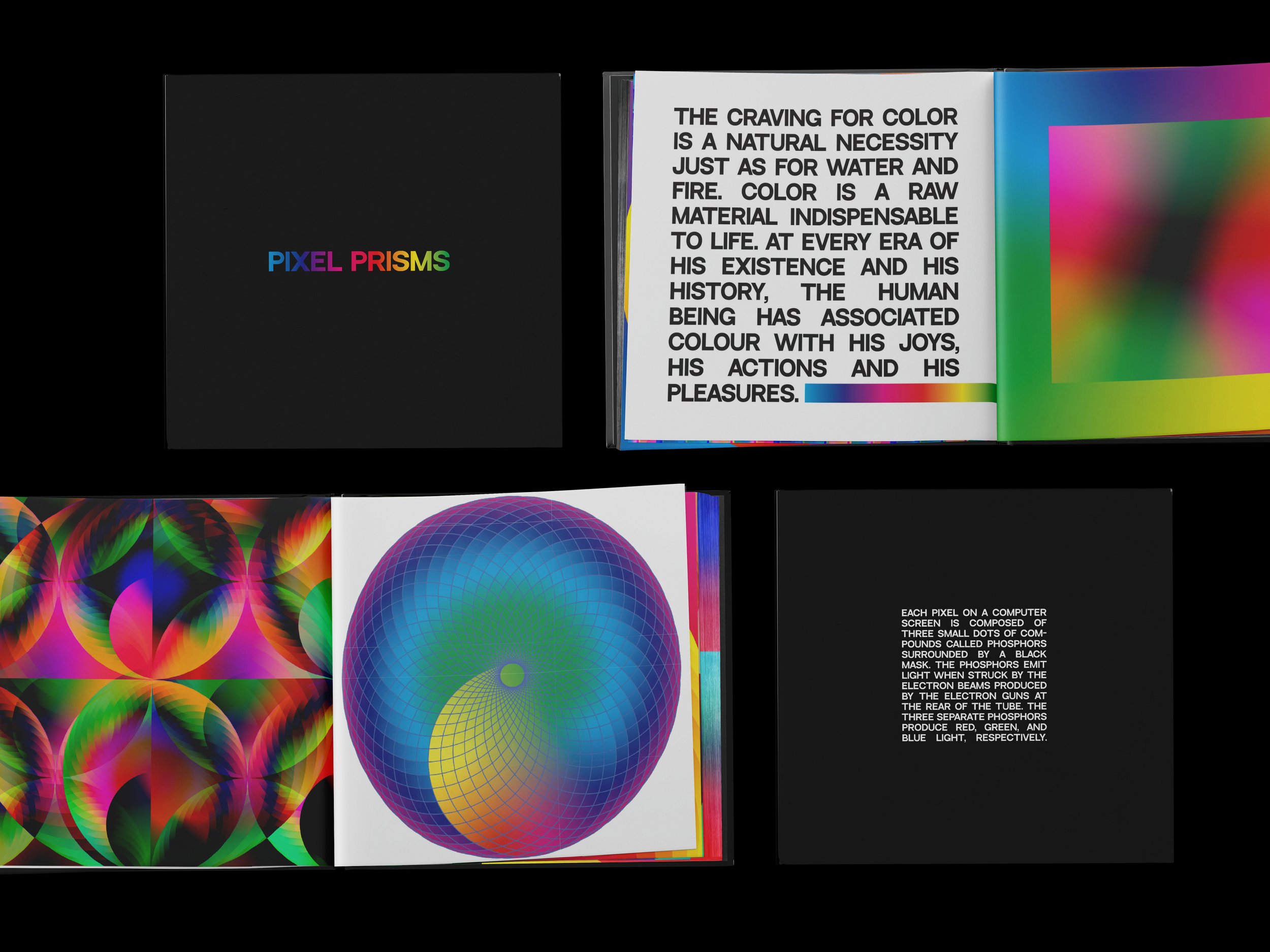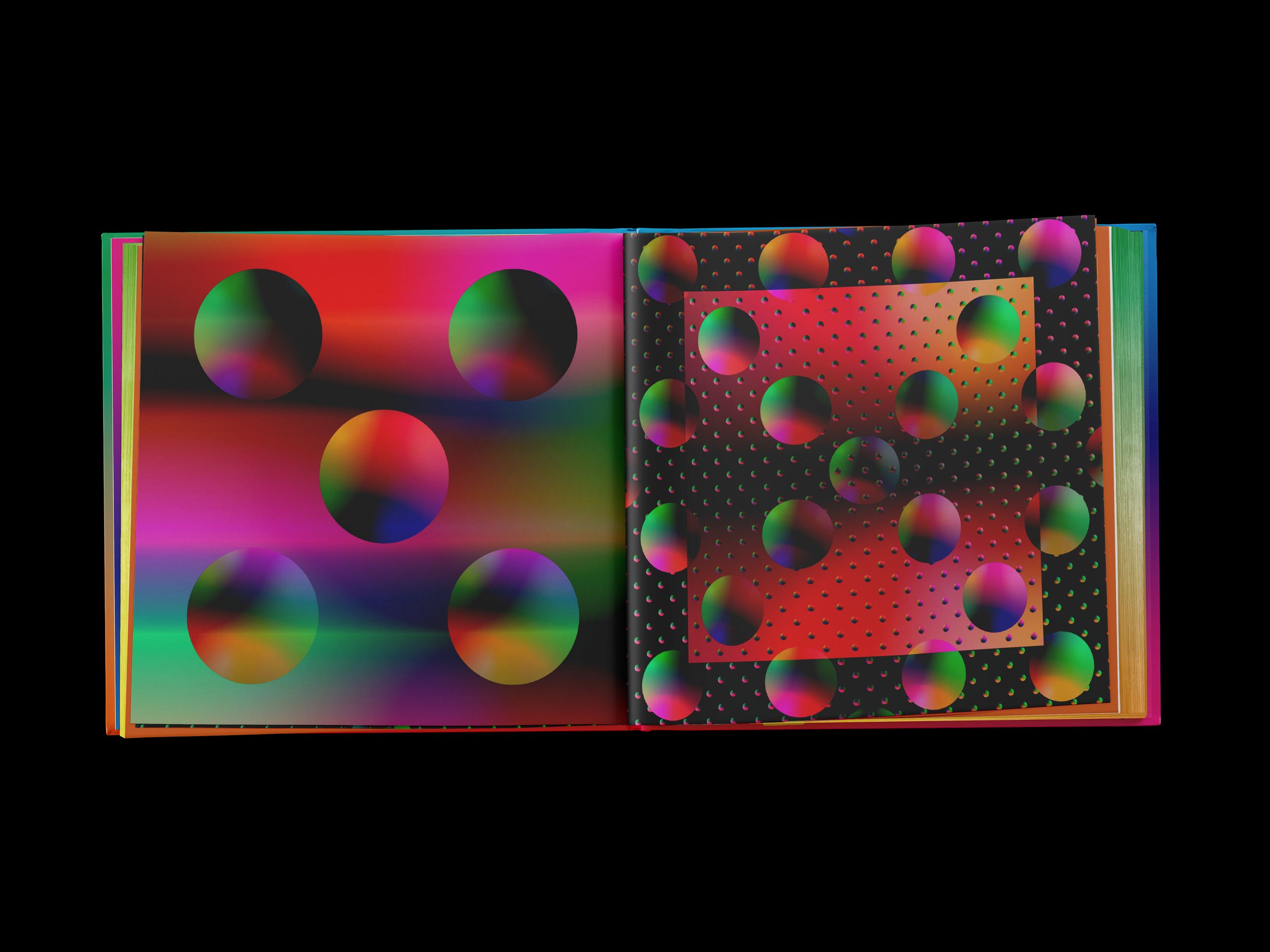Pixel Prisms
In my final semester at the SMFA, I reflected on how my practice had evolved from a traditional, canvas-based approach to one deeply intertwined with digital design and fabrication. Initially, I planned to detach myself from the screen to see why it fascinated me so much. However, the power of digital software — especially for creating bold color relationships and repetitive motifs — ultimately drew me in further.
The result was a hardcover, print-on-demand artist’s book titled Pixel Prisms, which captured my newfound understanding of digital’s “larger than life” compositional possibilities.
Through repeated explorations of color and motif, I began to see the screen as a modern prism — capable of producing vivid, “larger than life” compositions. I drew inspiration from diagrams of light refraction as well as more psychedelic imagery, focusing on geometric shapes in gradient-heavy layers. By collecting quotes from a wide variety of thinkers who wrote about color theory, I blended textual depth with my visual experiments.
I translated my software experiments into a print-on-demand hardcover format, ensuring that the vibrant on-screen hues carried over into ink and paper. Each spread featured prismatic patterns — some at magnified scales, others in tight, kaleidoscopic formations — to accentuate the refractive nature of color. Through multiple proofing stages, I refined how the gradients, shapes, and text interlaced, striving for a harmonious balance between the visual intensity of the patterns and the conceptual nuances of the quotes.
In the end, Pixel Prisms served as a tangible manifestation of my journey — linking the canvas tradition I started with to the digital tools that redefined my artistic practice.
Every time I tried to resist the pull of the screen, I discovered another facet of its power to transform color, shape, and space. By layering geometric motifs, gradients, and text on color theory, I created a piece that echoed my own transition — from traditional canvas painting to digital exploration, from doubt about technology’s place in my process to a thrill at its possibilities.
EDIT THIS BLOCK TO CHANGE BACKGROUND COLOR
and image borders














